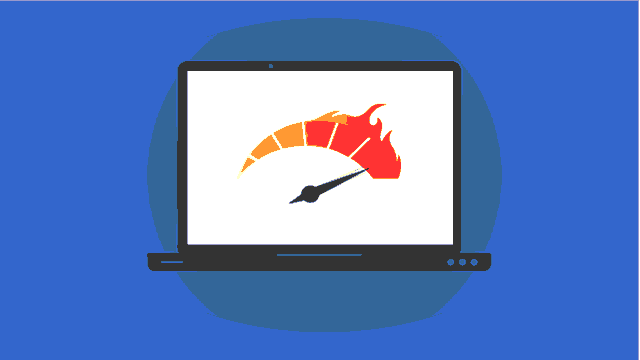Taking a screenshot is one of those essential skills every laptop user should master.
Whether you’re saving a funny meme, capturing an error message for tech support, or snagging a moment from a video call, knowing how to screenshot on your HP laptop can save you time and effort.
HP laptops, running Windows, offer several builtin methods to capture your screen—plus some handy extras. In this guide, we’ll walk you through all the ways to take a screenshot on an HP laptop, step by step, so you can pick the one that works best for you.
Why Take a Screenshot?
Before we jump in, here’s why screenshots are so useful:
Quick Saves: Grab an image or text without needing to download or copy manually.
Sharing: Send proof of something—like a receipt or a chat—to friends or colleagues.
Documentation: Record what’s on your screen for tutorials or troubleshooting.
Let’s dive into the methods tailored for your HP laptop!
Method 1: Using the Print Screen (PrtSc) Key
The Print Screen key (often labeled PrtSc or PrtScn) is the classic way to screenshot on any Windows device, including HP laptops. Here’s how:
1. Locate the PrtSc Key
On most HP keyboards, it’s in the top row, near the function keys (F1–F12). It might share a key with another function (like “SysRq”)—if so, you may need to press Fn (bottom left) along with it.
2. Capture the Entire Screen
Press PrtSc (or Fn + PrtSc if required).
This copies your entire screen to the clipboard—no visible confirmation, but it’s there!
3. Paste and Save
Open an app like Paint (search for it in the Start menu), Word, or even an email.
Press Ctrl + V to paste the screenshot.
Edit if needed (e.g., crop in Paint), then click File > Save As to save it as a PNG or JPG in your desired folder (like Pictures).
Pros: Simple, works on all HP laptops.
Cons: Requires an extra step to save; no selective capture.
Method 2: Capture and Save Directly with Windows + PrtSc
For a faster way that autosaves your screenshot, use this shortcut:
1. Press Windows + PrtSc
Hold the Windows Key (bottom row, with the Windows logo) and press PrtSc.
Your screen will dim briefly, signaling the screenshot was taken.
2. Find Your Screenshot
Go to C:\Users\[YourUsername]\Pictures\Screenshots.
It’s saved as a PNG file, named “Screenshot (1),” “Screenshot (2),” etc.
Pros: Instant save, no pasting needed.
Cons: Captures the full screen only; no editing before saving.
Method 3: Using Alt + PrtSc for Active Window Only
If you just want to screenshot the window you’re working in (not the whole screen), try this:
1. Select Your Window
Click the app or window you want to capture (e.g., a browser or document).
2. Press Alt + PrtSc
Hold Alt and press PrtSc (or Fn + Alt + PrtSc if needed).
This copies only the active window to your clipboard.
3. Paste and Save
Open Paint or another app, press Ctrl + V to paste, and save it as a file.
Pros: Great for capturing one app without clutter.
Cons: Still requires manual saving.
Method 4: Using the Snipping Tool (Windows 10 & 11)
The Snipping Tool is a builtin Windows app that gives you more control over your screenshots. Here’s how to use it:
1. Open Snipping Tool
Press Windows Key, type “Snipping Tool,” and hit Enter.
2. Choose a Mode
Click Mode (or the dropdown in older versions) and pick:
Freeform Snip: Draw any shape.
Rectangular Snip: Drag a box (most common).
Window Snip: Capture a specific window.
Fullscreen Snip: Grab everything.
3. Take the Screenshot
Click New, then drag your cursor to select the area (or click a window/full screen, depending on mode).
The screenshot appears in the Snipping Tool window.
4. Edit and Save
Use the pen or highlighter to annotate if you want.
Click File > Save As or the floppy disk icon to save it as a PNG or JPG.
Pros: Flexible, builtin editing.
Cons: Slightly slower than shortcuts.
Method 5: Using Snip & Sketch (Windows 10) or Snipping Tool’s New Mode (Windows 11)
For a modern twist, Snip & Sketch (or its updated version in Windows 11) is quick and versatile:
1. Launch It
Press Windows Key + Shift + S.
Your screen dims, and a small toolbar appears at the top.
2. Select Your Capture
- Choose from:
Rectangular snip
Freeform snip
Window snip
Fullscreen snip
Drag or click to capture.
3. Edit and Save
A notification pops up—click it to open the screenshot in Snip & Sketch.
Crop, draw, or annotate, then click the Save icon (floppy disk) to store it.
Pros: Fast, modern, easy editing.
Cons: Might feel unfamiliar to new users.
Bonus: Third Party Tools
If you want more features (e.g., scrolling screenshots or video capture), try these free tools:
ShareX: Lightweight, customizable, great for power users.
Greenshot: Simple, with quick editing options.
Download from their official sites, install, and follow their instructions.
Tips for Perfect Screenshots
Keyboard Check: If PrtSc doesn’t work, test with Fn or update your keyboard drivers via HP’s support site.
File Management: Rename screenshots (e.g., “Meeting_040625”) for easy tracking.
Quality: PNG files are sharper than JPG—choose based on your needs.
Practice: Try each method to find your favorite.
Troubleshooting
PrtSc Not Working? Ensure Fn Lock isn’t on (check your keyboard for a lock light). Restarting may help.
No Dimming with Windows + PrtSc? Check Settings > Ease of Access > Keyboard and enable the animation toggle.
Can’t Find Files? Search “Screenshots” in File Explorer.
Final Thoughts
Taking a screenshot on your HP laptop is a breeze once you know the options. Whether you prefer the quick Windows + PrtSc shortcut, the precision of the Snipping Tool, or the modern flair of Snip & Sketch, there’s a method for every situation.
Experiment with these techniques to see which fits your workflow best—and you’ll never miss capturing a moment again!
I am an extensive connoisseur of windows problem-solving techniques and everyday tech tips and tricks.
RELATED POSTS
View all




